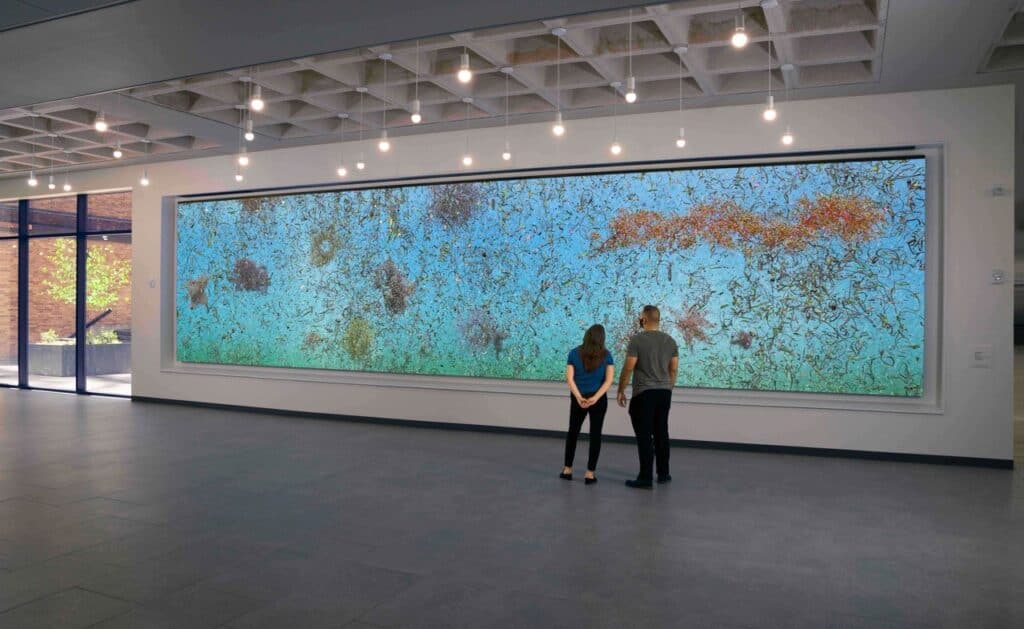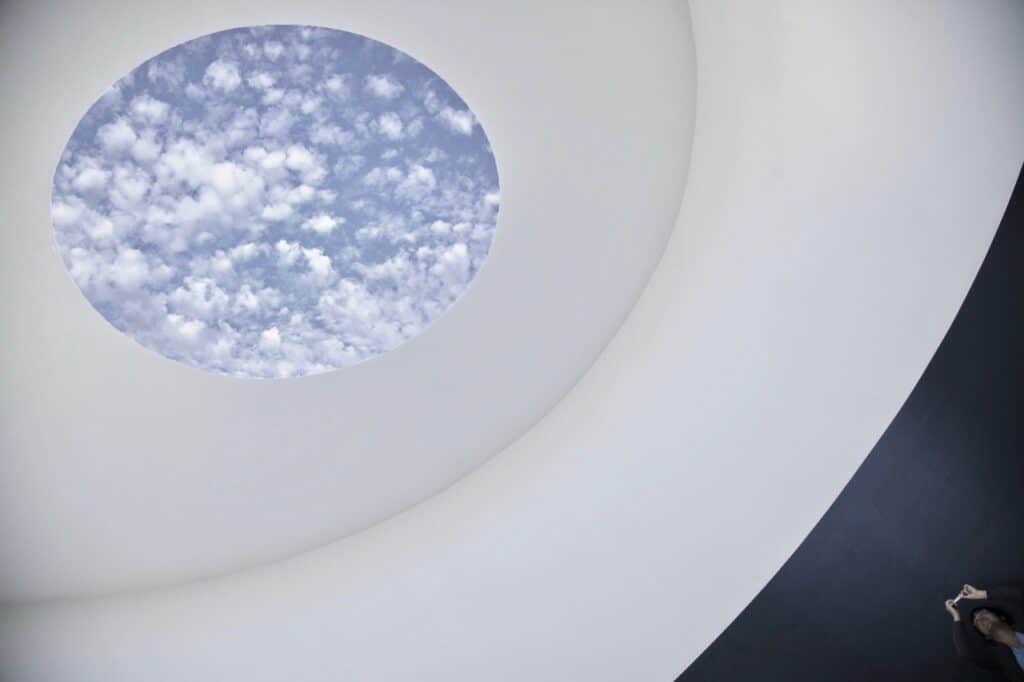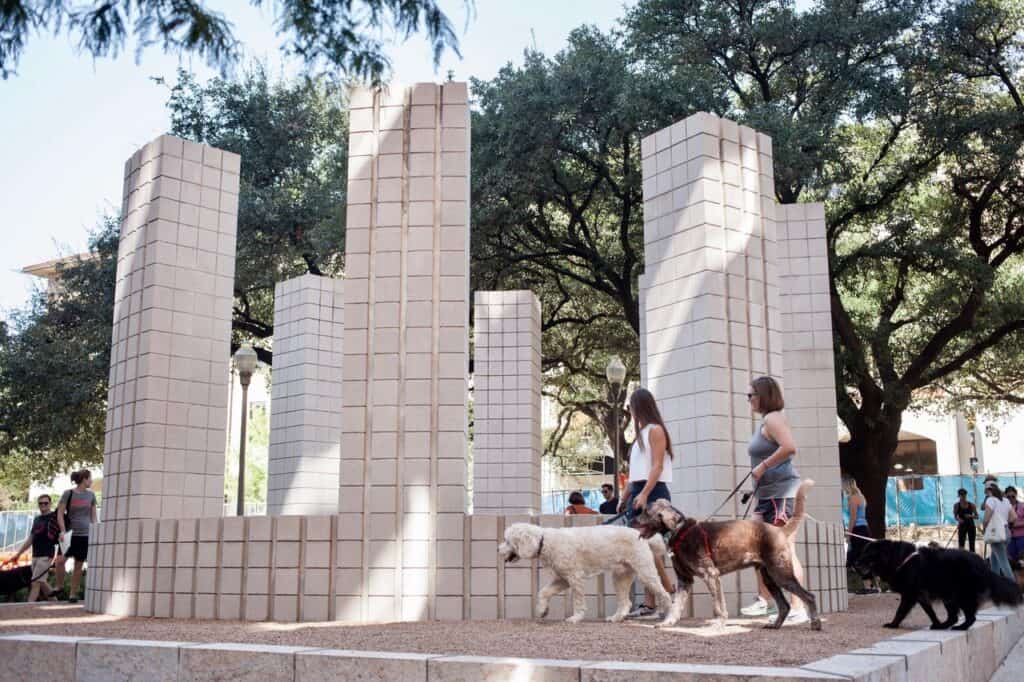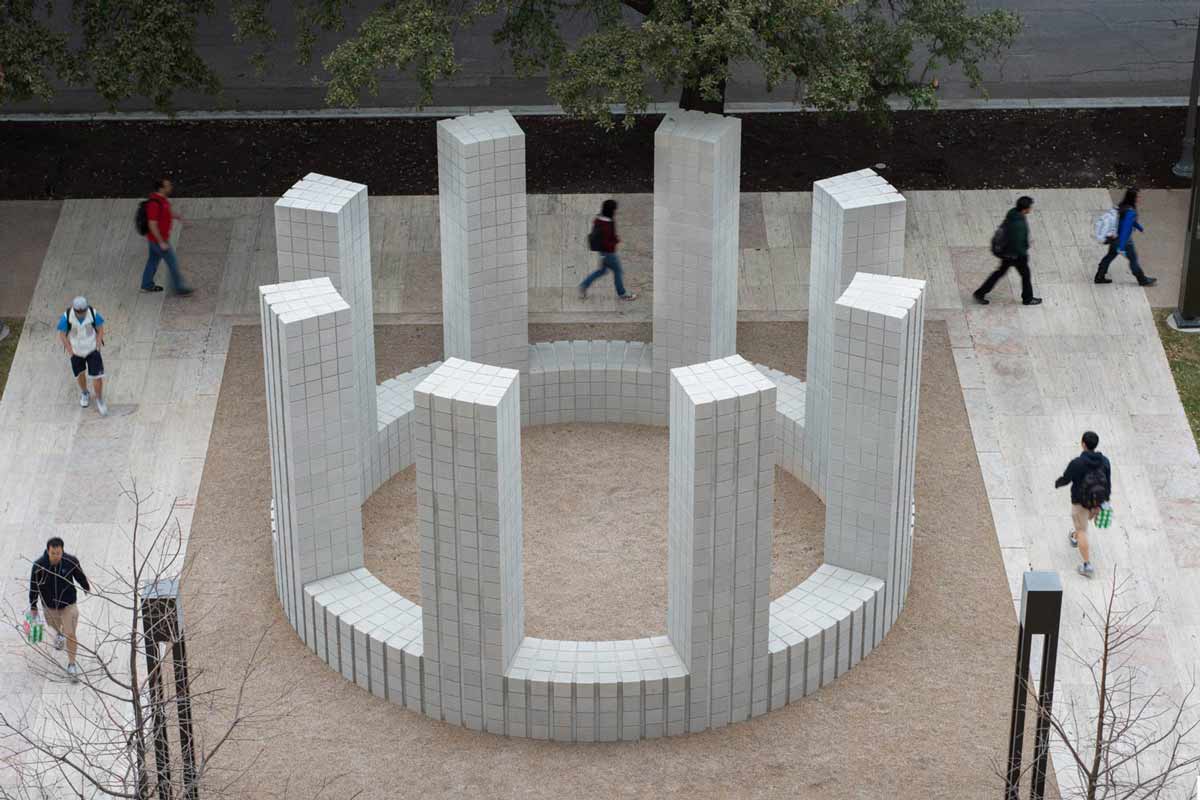Works of public art have the capacity to resonate deeply, stimulate curiosity, and inspire the imagination in unexpected ways. Landmarks, the public art program at the University of Texas at Austin, presents some fifty works of modern and contemporary art across the university’s 433-acre campus. Its mission is to make great art free and accessible to all.
For many, the collection provides an introductory opportunity to discover great works of art in familiar environments. The reach of the collection is astonishing; an independent study estimates that it is viewed by more than 160,000 people each day. Leadership from Landmarks and Still Water share their reflections on the impact of the public art program in this video.
As educators, we encourage students to look beyond the surface of things and engage in the world of ideas. Having great art as part of our everyday lives normalizes creative thought and expression; it invites us to take part in a cultural dialogue happening around the globe, and opens the possibility of a lifetime of engagement with the arts.
Andrée Bober, Executive Director and Curator at Landmarks
Exploring the Collection
Landmarks’ collection appears throughout the campus and connects meaningfully to each site. Jennifer Steinkamp was commissioned recently to create EON, a digital animation for the College of Natural Sciences. The installation features biomorphic shapes that undulate across the screen, forming a hive of living organisms, all teaming with life. It was inspired by the concept of symbiosis: the interdependence of unlike organisms that survive through cooperation.

One of the most popular works in the collection is The Color Inside, a Skyspace by artist James Turrell. Enjoyed by more than 75,000 people each year, the Skyspace is a naked-eye observatory that is filled with natural light during the day and brilliant washes of color each sunrise and sunset. By manipulating light, Turrell causes the sky to appear in ways that heighten perceptions, encourage reflection, and stimulate social connection through shared experience.

Landmarks not only brings great works of art into our daily lives, but it also provides robust opportunities to discover and learn. Free resources include scholarship, maps, audio guides, videos, children’s activity guides, artist talks, and music programs. Many participate in self-guided mobile tours, and walking tours led by student docents. Volunteers in the Landmarks Preservation Guild learn conservation techniques to help preserve the collection for future generations. This array of activities allows students and broader community members multiple avenues to experience and make meaning of the art.

Investing in the Future
The goal of Landmarks is to make meaningful art available to broad audiences, and achieving this mission over time requires significant investment in conservation, programing, and building organizational capacity. The Foundation was proud to contribute to a long-term vision for Landmarks through an endowment gift and challenge grant, with the goal of broadening its impact and inspiring others to support this shared community treasure.

